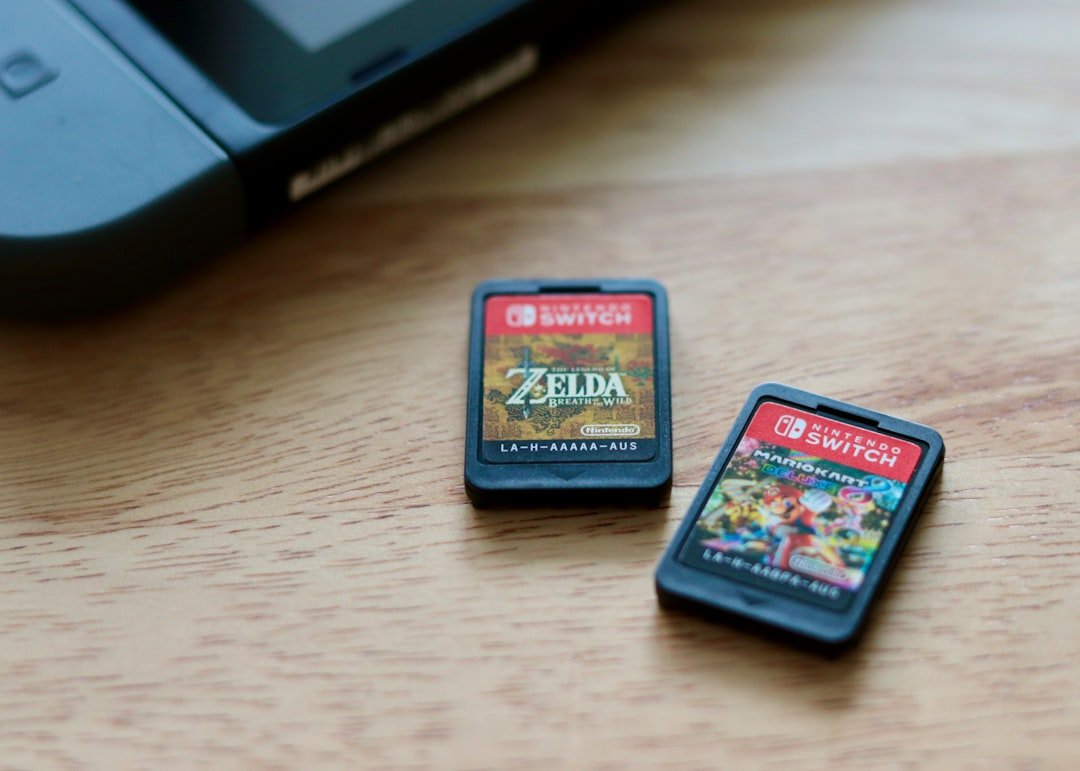Now Reading: Top 10 Most Innovative Indie Games of the Decade
-
01
Top 10 Most Innovative Indie Games of the Decade
Top 10 Most Innovative Indie Games of the Decade

As I delve into the world of video games, I find myself increasingly captivated by the indie game industry. This vibrant sector has emerged as a powerful force, breathing new life into the gaming landscape. Unlike mainstream titles that often rely on massive budgets and extensive marketing campaigns, indie games are typically developed by smaller teams or even solo creators.
This independence allows for a level of creativity and innovation that is often absent in larger productions. The indie scene is a melting pot of ideas, where developers can take risks and explore unconventional narratives, gameplay mechanics, and artistic styles. The rise of digital distribution platforms like Steam, itch.io, and the Epic Games Store has further fueled the growth of indie games.
These platforms provide developers with the means to reach a global audience without the need for traditional publishing deals. As I explore this realm, I am constantly amazed by the diversity of experiences that indie games offer. From heartwarming narratives to challenging puzzles, the indie game industry has something for everyone.
It is a testament to the power of creativity and passion, showcasing how a small team can create something that resonates deeply with players around the world.
Key Takeaways
- The indie game industry has seen significant growth and innovation in recent years, offering unique and creative gaming experiences.
- The criteria for selecting the top 10 most innovative indie games include originality, creativity, gameplay mechanics, storytelling, and overall impact on the gaming industry.
- Celeste is a powerful story of perseverance and self-discovery, with challenging platforming gameplay and a compelling narrative.
- Hollow Knight offers a dark and beautiful metroidvania adventure, with stunning visuals, intricate level design, and immersive exploration.
- Undertale provides a unique RPG experience with unforgettable characters, moral choices, and a clever blend of humor and emotional depth.
Criteria for Selecting the Top 10 Most Innovative Indie Games
When it comes to selecting the top 10 most innovative indie games, I find that several criteria come into play. First and foremost, originality is key. I look for games that push boundaries and introduce fresh concepts, whether through gameplay mechanics, storytelling techniques, or artistic styles.
Innovation often stems from a willingness to experiment, and I appreciate games that take bold risks in their design choices. Another important factor is emotional impact. The best indie games often evoke strong feelings, whether it’s joy, sadness, or nostalgia.
I seek out titles that resonate on a personal level, offering players an experience that lingers long after the credits roll. Additionally, I consider the overall execution of the game. A well-crafted experience that seamlessly integrates its innovative elements is essential for leaving a lasting impression.
Finally, community engagement plays a role in my selection process; games that foster a sense of connection among players often stand out in my mind.
Celeste: A Tale of Perseverance and Self-Discovery

One game that has left an indelible mark on my gaming journey is Celeste. This platformer is not just about jumping and climbing; it’s a poignant exploration of perseverance and self-discovery. As I guide Madeline up the treacherous mountain, I can’t help but feel a connection to her struggles.
The game’s narrative beautifully intertwines with its gameplay, creating an experience that is both challenging and emotionally resonant. The pixel art style is charming yet evocative, perfectly complementing the game’s themes. Each level presents unique obstacles that mirror Madeline’s internal battles, making every victory feel hard-earned. The soundtrack is another highlight; its haunting melodies enhance the emotional weight of the story. Celeste is more than just a game; it’s a journey of growth and resilience that encourages players to confront their own challenges.
Hollow Knight: A Dark and Beautiful Metroidvania Adventure
Hollow Knight stands out as a masterclass in atmospheric storytelling and intricate design. As I traverse the hauntingly beautiful world of Hallownest, I am struck by the depth of its lore and the richness of its environments. The hand-drawn art style creates a visually stunning experience that draws me into its dark yet enchanting realm.
Each area feels distinct, filled with secrets waiting to be uncovered. The gameplay mechanics are fluid and rewarding, allowing for a sense of mastery as I navigate through challenging enemies and intricate platforming sections. The game’s emphasis on exploration resonates with me; every corner of Hallownest holds potential surprises and hidden treasures.
Hollow Knight not only captivates with its aesthetics but also engages players through its compelling narrative and challenging gameplay, making it a standout title in the indie scene.
Undertale: A Unique RPG Experience with Unforgettable Characters
Undertale is a game that defies conventional RPG norms, offering an experience that is as quirky as it is profound. From the moment I step into its pixelated world, I am greeted by a cast of unforgettable characters who challenge my perceptions of morality and choice. The game’s unique combat system allows me to spare enemies instead of defeating them, leading to unexpected outcomes that shape my journey.
The humor woven throughout the narrative keeps me engaged while also prompting deeper reflections on friendship and empathy. Each encounter feels meaningful, as I navigate through a world where my choices truly matter. Undertale’s ability to blend humor with poignant moments makes it a standout title in my gaming repertoire.
It’s a reminder that even in a world filled with conflict, understanding and compassion can lead to unexpected resolutions.
Stardew Valley: Farming Simplicity with Endless Charm

Stardew Valley has become a beloved staple in my gaming library, offering a delightful escape into the world of farming and community building. As I cultivate my land and interact with the charming residents of Pelican Town, I find solace in the simplicity of its gameplay. The pixel art aesthetic is warm and inviting, creating an atmosphere that feels like home.
What truly sets Stardew Valley apart is its emphasis on player choice and freedom. Whether I choose to focus on farming, fishing, mining, or building relationships with townsfolk, each decision shapes my experience in meaningful ways. The game’s relaxing pace allows me to unwind while still providing enough challenges to keep me engaged.
Stardew Valley is more than just a farming simulator; it’s a celebration of community, creativity, and the joy of simple pleasures.
Inside: A Haunting and Atmospheric Puzzle Platformer
Inside is a game that lingers in my mind long after I’ve played it. This atmospheric puzzle platformer immerses me in a dystopian world filled with tension and intrigue. The minimalist art style enhances the haunting atmosphere, drawing me into its dark narrative without uttering a single word.
Each level presents unique puzzles that challenge my problem-solving skills while keeping me on edge. The sense of foreboding permeates every moment as I navigate through eerie environments filled with danger. Inside masterfully combines gameplay with storytelling, creating an experience that feels cohesive and impactful.
The game’s ability to evoke emotions through visual storytelling is remarkable; it’s a testament to how powerful silence can be in conveying meaning. Inside leaves me pondering its themes long after I’ve put down the controller.
Baba Is You: A Mind-Bending Puzzle Game with a Twist
Baba Is You is a puzzle game that redefines how I approach problem-solving in gaming. The core mechanic revolves around manipulating rules themselves to progress through levels, creating an experience that feels fresh and innovative. As I push blocks around to change the very fabric of the game world, I am constantly challenged to think outside the box.
The simplicity of its design belies the complexity of its puzzles; each level requires creative thinking and experimentation to solve. Baba Is You encourages me to embrace trial and error while rewarding my curiosity with satisfying breakthroughs. It’s a game that not only entertains but also stimulates my mind in ways I never expected from a puzzle platformer.
Celeste: A Tale of Perseverance and Self-Discovery
Returning to Celeste feels like revisiting an old friend who has taught me valuable lessons about resilience and self-acceptance.
Each level serves as both a physical challenge and an emotional exploration, reminding me that growth often comes from facing adversity head-on.
The mechanics are finely tuned; every jump and dash feels satisfying as I overcome obstacles that mirror Madeline’s struggles with anxiety and self-doubt. The supportive community surrounding Celeste adds another layer to my appreciation for the game; players share their own stories of perseverance inspired by Madeline’s journey. Celeste is not just a platformer; it’s an experience that encourages introspection and personal growth.
Return of the Obra Dinn: A Brilliantly Unique Detective Game
Return of the Obra Dinn stands out as one of the most innovative detective games I’ve ever encountered. Its distinctive art style, reminiscent of early computer graphics, immediately captures my attention as I step into the shoes of an insurance investigator tasked with uncovering the fate of a ghost ship’s crew. The game’s unique mechanic requires me to piece together events from fragmented memories, creating an engaging puzzle-solving experience.
As I delve deeper into the mystery, I am captivated by the intricate storytelling woven throughout each character’s fate. The challenge lies not only in deducing what happened but also in understanding the relationships between characters and their motivations. Return of the Obra Dinn exemplifies how innovative design can elevate storytelling in games; it’s an experience that keeps me engaged while challenging my deductive reasoning skills.
The Impact of Indie Games on the Gaming Industry
Reflecting on my journey through these innovative indie games, I am struck by their profound impact on the gaming industry as a whole. Indie developers have proven time and again that creativity knows no bounds when given the freedom to explore new ideas without corporate constraints. These games challenge traditional norms and inspire larger studios to take risks in their own projects.
The emotional depth and unique experiences offered by indie titles have reshaped player expectations, pushing for more meaningful narratives and diverse gameplay mechanics across all genres. As I continue to explore this ever-evolving landscape, I am excited to see how indie games will continue to influence the future of gaming—reminding us all that sometimes, it’s the smallest voices that have the most significant impact on our hearts and minds.
If you’re a fan of indie games and looking to transition from casual to competitive gaming, you may find this article helpful. It offers tips and strategies for improving your skills and taking your gaming to the next level. Additionally, if you enjoy uncovering secrets and Easter eggs in popular titles, you might be interested in reading this article. And for those who love single-player games with multiplayer vibes, check out this list for some great recommendations.
FAQs
What are indie games?
Indie games are video games created by individuals or small teams without the financial support of a large game publisher. These games are often known for their creativity, unique gameplay mechanics, and artistic expression.
What makes a game innovative?
Innovation in games can come in various forms, including unique gameplay mechanics, storytelling techniques, art styles, and technological advancements. Innovative games often push the boundaries of what is expected in the gaming industry and offer new and exciting experiences for players.
What are some of the most innovative indie games of the decade?
Some of the most innovative indie games of the decade include titles such as “Undertale,” “Celeste,” “Hollow Knight,” “Stardew Valley,” “Inside,” “Baba Is You,” “Superhot,” “The Witness,” “Cuphead,” and “Return of the Obra Dinn.” These games have received critical acclaim for their creativity, originality, and unique gameplay experiences.
How do indie games contribute to the gaming industry?
Indie games play a crucial role in the gaming industry by offering fresh and innovative ideas that often inspire larger game developers. They also provide a platform for experimental gameplay mechanics and storytelling techniques that may not be feasible in larger, more commercially-driven projects. Additionally, indie games help diversify the gaming market and cater to niche audiences with unique tastes.
What impact have indie games had on the gaming industry?
Indie games have had a significant impact on the gaming industry by challenging traditional game development practices and inspiring larger studios to take creative risks. They have also helped popularize new genres and gameplay mechanics, leading to a more diverse and innovative gaming landscape. Additionally, indie games have shown that small teams and individuals can create successful and influential titles without the backing of major publishers.



























